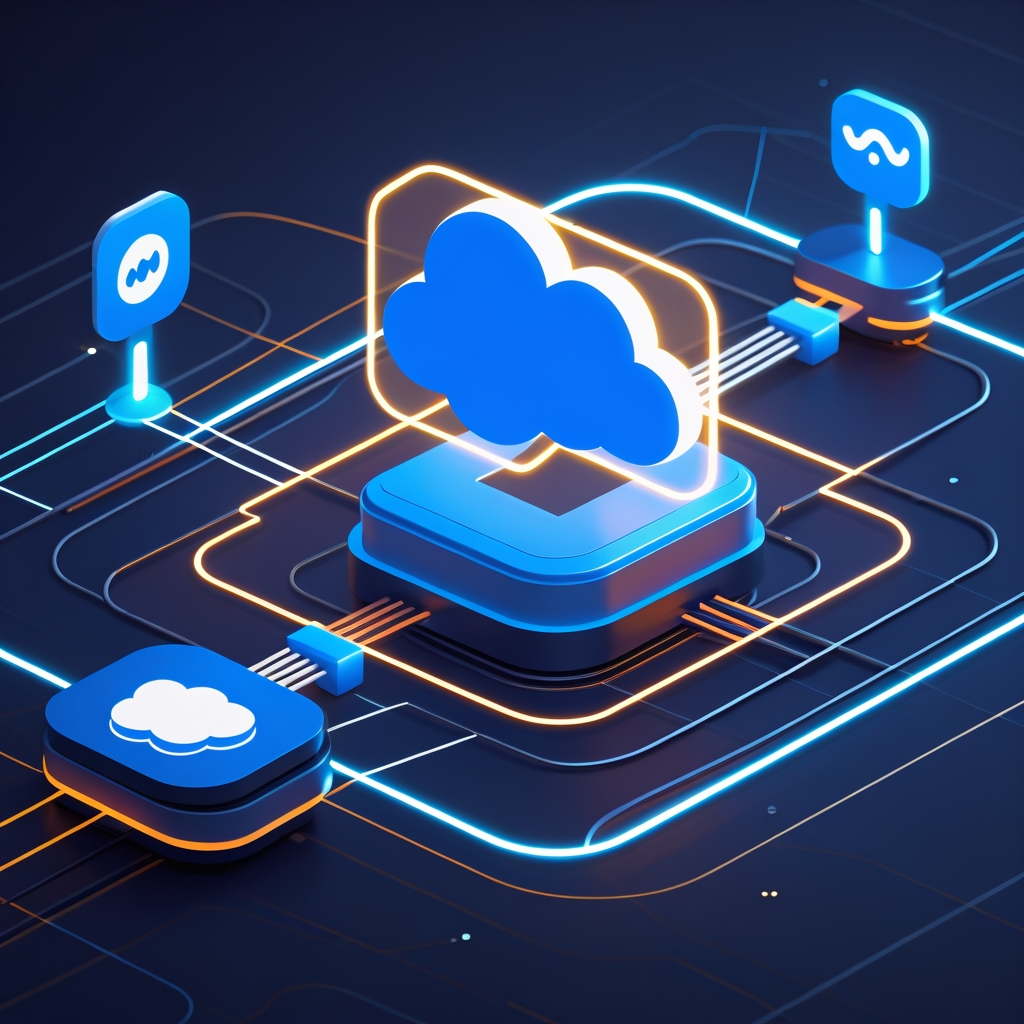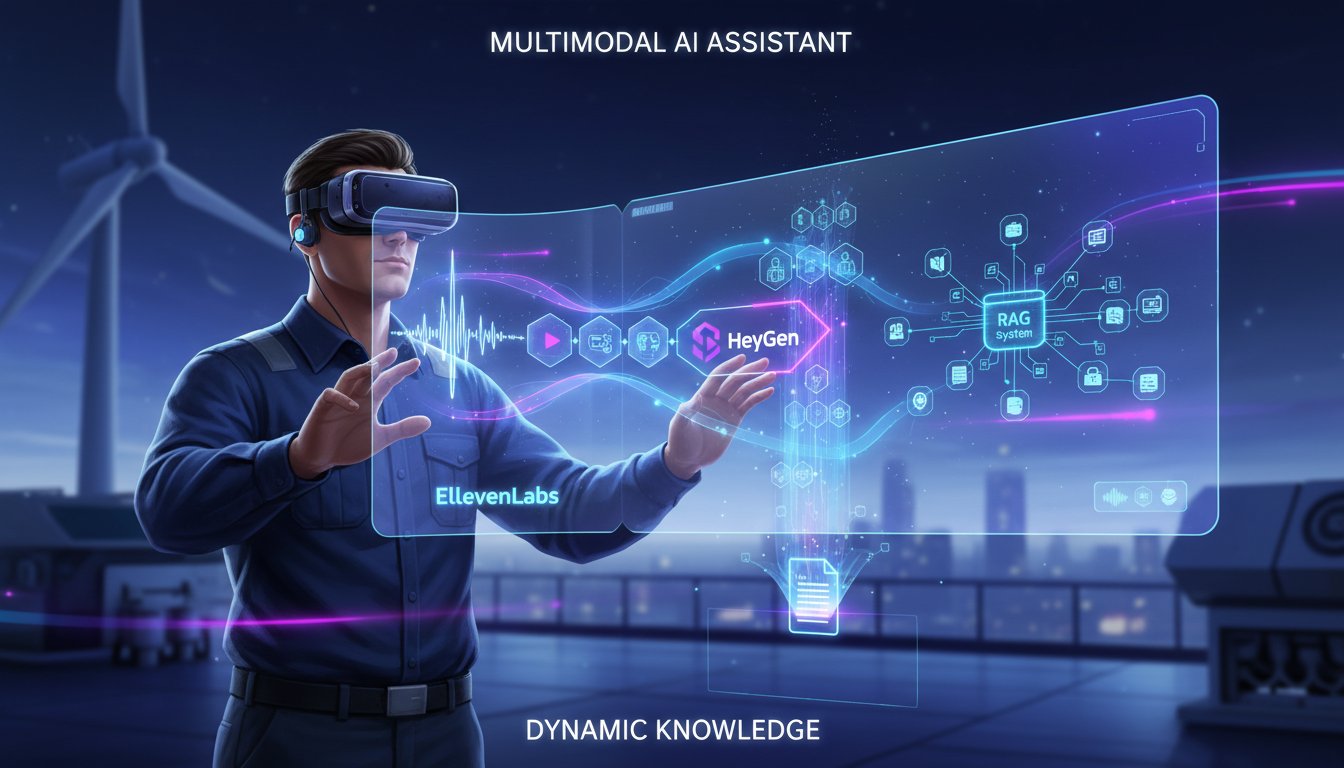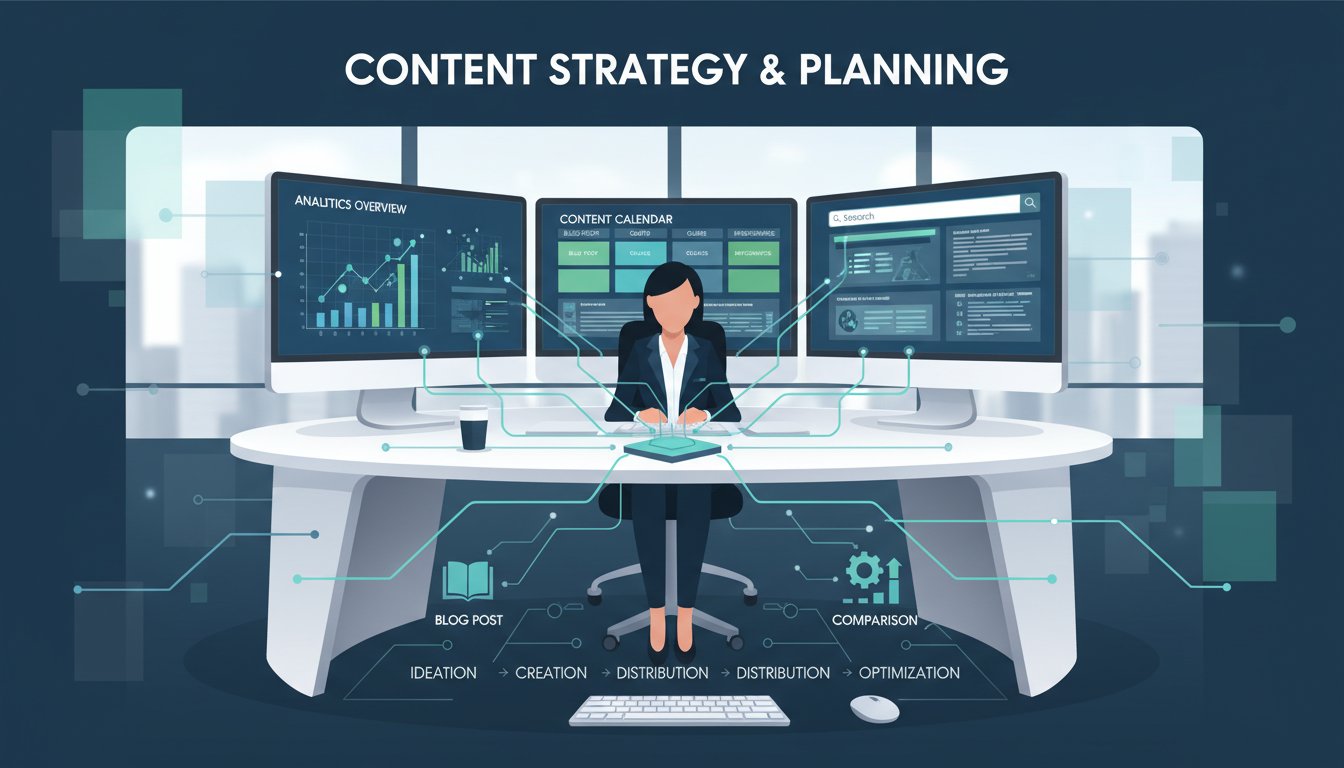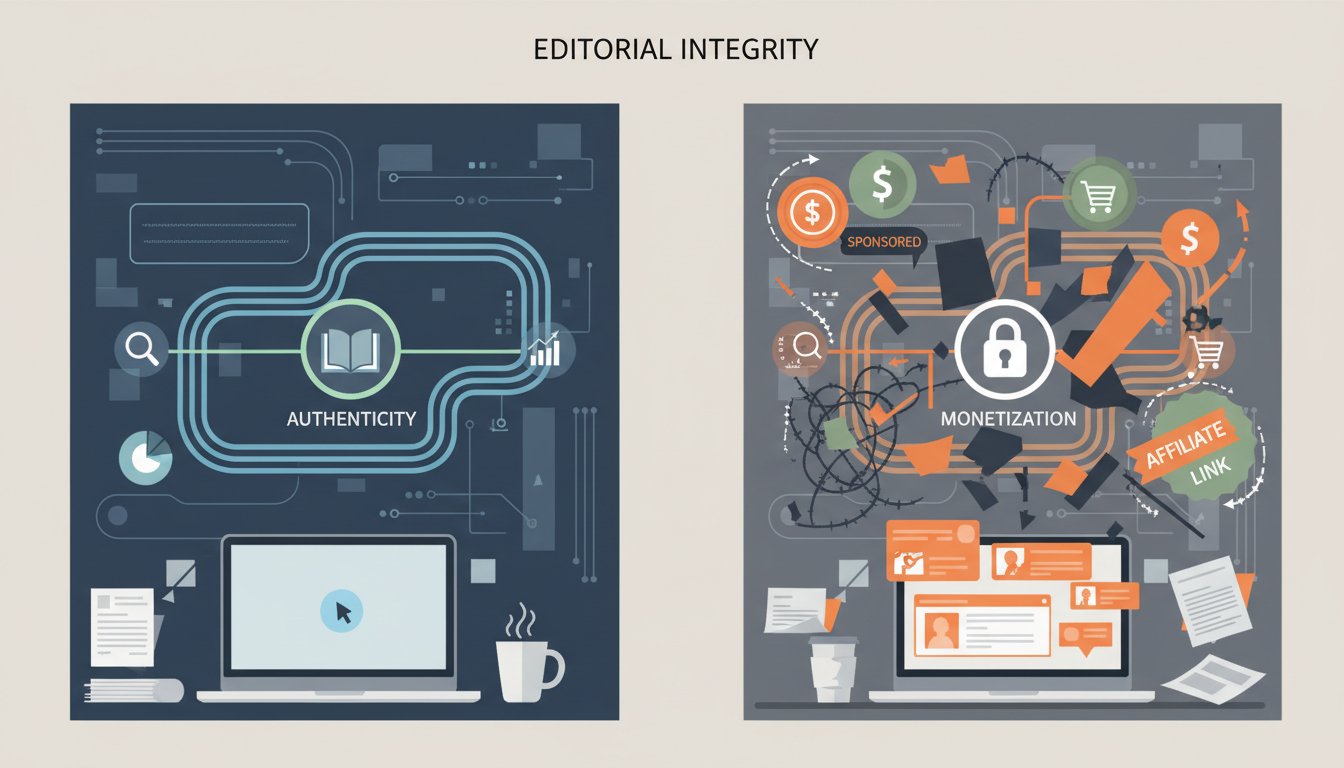Imagine your top sales executive racing between meetings. They need the latest figures for a key account, right now. Fumbling with a laptop, navigating complex Salesforce dashboards, or pinging an already busy analyst isn’t just inconvenient; it’s a bottleneck. What if they could simply ask, out loud, “What were the Q3 sales figures for Acme Corp?” and get an immediate, accurate, spoken response? This isn’t science fiction anymore. It’s the power of combining sophisticated AI retrieval techniques with natural language voice interfaces, directly connected to your core business data.
The challenge, historically, has been bridging the gap between vast, often complex enterprise datasets like those housed in Salesforce and the intuitive interaction offered by Large Language Models (LLMs). Standard LLMs, trained on general internet data, lack real-time access to specific organizational knowledge and can sometimes ‘hallucinate’ or invent information. Directly fine-tuning them on constantly changing enterprise data is often impractical and expensive. Furthermore, building the infrastructure to reliably retrieve the right information from Salesforce to feed into an AI prompt requires significant engineering effort, involving data pipelines, vector databases, and complex orchestration.
This is where Retrieval-Augmented Generation (RAG) enters the picture, providing a more efficient and accurate way to ground AI responses in factual, up-to-date information. And now, with the advent of managed RAG services like Cloudflare’s AutoRAG and powerful, easy-to-integrate voice synthesis APIs like ElevenLabs, building sophisticated, voice-enabled Q&A systems is becoming dramatically simpler. By leveraging AutoRAG to handle the complexities of RAG pipeline deployment and connecting it to your Salesforce data, you can create a system that retrieves relevant information on demand. Adding ElevenLabs provides a natural, conversational voice layer, transforming raw data retrieval into a seamless interactive experience.
This post will guide you through the concepts and architecture required to build such a system. We’ll explore the roles of RAG, Cloudflare AutoRAG, Salesforce, and ElevenLabs, outlining a blueprint for connecting these technologies. While we’ll keep the code implementation high-level, you’ll gain a clear understanding of the workflow, the benefits, and the key considerations involved in bringing voice-activated Salesforce insights to your team.
Understanding the Core Components
Building this voice-enabled bot involves orchestrating several key technologies. Let’s break down each component and its role in the system.
What is RAG and Why Does it Matter for Enterprise Data?
Retrieval-Augmented Generation (RAG) is an AI framework designed to improve the quality and reliability of LLM responses by grounding them in external knowledge sources. Instead of solely relying on its internal training data, an LLM using RAG first retrieves relevant information snippets from a specified dataset (like your Salesforce records) based on the user’s query. These snippets are then incorporated into the prompt given to the LLM, guiding it to generate an answer that is contextually relevant and factually accurate based on the retrieved data.
For enterprise data, RAG is crucial. It allows AI systems to access and reason over private, proprietary, or rapidly changing information stored in databases, documents, or applications like Salesforce, without needing constant retraining. This significantly reduces hallucinations and ensures responses reflect the actual state of your business.
Introducing Cloudflare AutoRAG: Simplifying RAG Deployment
The mechanics of setting up a robust RAG pipeline – ingesting data, choosing embedding models, managing vector databases, orchestrating the retrieval and generation steps – can be complex and time-consuming. Cloudflare AutoRAG aims to simplify this significantly. As a managed service (based on recent announcements), AutoRAG provides developers with an easier path to deploying RAG applications.
While specific features evolve, the core value proposition is reducing the infrastructural burden. It allows developers to connect their data sources (like Salesforce, potentially via APIs or data exports) and leverage Cloudflare’s infrastructure to handle the backend complexities of indexing, retrieval, and integration with LLMs. This aligns with the industry trend towards making powerful AI techniques more accessible for practical business applications.
Salesforce as the Knowledge Base
Salesforce is the central repository for customer information, sales activities, support interactions, and much more for countless organizations. Making this data easily accessible and queryable via natural language is immensely valuable. However, accessing this data programmatically requires understanding the Salesforce APIs (REST, SOAP, Bulk, etc.) and handling authentication, permissions, and the structure of Salesforce objects (Accounts, Contacts, Opportunities, Cases, etc.).
In our RAG system, Salesforce acts as the authoritative knowledge base. The RAG pipeline needs to effectively ingest relevant Salesforce data, index it appropriately (often converting text fields into vector embeddings), and retrieve the specific pieces of information needed to answer a user’s query.
ElevenLabs: Adding the Voice Layer
Once the RAG system retrieves the relevant Salesforce data and the LLM generates a text-based answer, we need to convert this into natural-sounding speech. This is where ElevenLabs comes in. ElevenLabs provides state-of-the-art text-to-speech (TTS) synthesis via a simple API.
Its key advantage is the quality and naturalness of the generated voices, making the interaction feel much more human and engaging than traditional robotic TTS systems. By sending the LLM’s text response to the ElevenLabs API, you receive an audio stream that can be played back to the user. This completes the voice-in, voice-out interaction loop. You can explore their capabilities further via their API http://elevenlabs.io/?from=partnerjohnson8503.
Architectural Blueprint: Connecting the Dots
Now let’s visualize how these components interact to answer a user’s spoken question about Salesforce data.
Data Ingestion and Indexing
The first step is making Salesforce data accessible to the RAG system. This typically involves:
- Extraction: Programmatically extracting relevant data from Salesforce using its APIs. You might focus on specific objects and fields (e.g., Account names, Opportunity amounts, Case subjects, Contact details).
- Transformation & Chunking: Formatting the extracted data and breaking it down into smaller, manageable chunks suitable for embedding and retrieval. Each chunk should ideally represent a distinct piece of information.
- Embedding: Using a sentence transformer or similar model to convert these text chunks into numerical vector representations (embeddings).
- Indexing: Storing these embeddings and their corresponding text chunks in a vector database, which allows for efficient similarity search. Cloudflare AutoRAG likely handles or integrates tightly with this indexing process.
This ingestion process might run periodically (e.g., nightly) or potentially more frequently, depending on data volatility and the need for real-time information.
The Query Flow: From Voice to Answer
Here’s the journey of a user query:
- Voice Input: The user speaks their question (e.g., “What’s the status of the support ticket for Beta Industries?”).
- Speech-to-Text (STT): A speech-to-text service (potentially integrated within your application or using a service like Whisper API) converts the spoken words into text.
- Query to AutoRAG: The text query is sent to the Cloudflare AutoRAG endpoint.
- Retrieval: AutoRAG converts the query into an embedding and searches the indexed Salesforce data (vector database) to find the most relevant data chunks.
- Augmentation & Generation: AutoRAG combines the original query with the retrieved Salesforce data snippets into a prompt for an LLM.
- LLM Response: The LLM generates a text answer based only on the provided context and query.
- Text-to-Speech (TTS): The generated text answer is sent to the ElevenLabs API (http://elevenlabs.io/?from=partnerjohnson8503).
- Voice Output: ElevenLabs returns an audio stream of the answer spoken in a natural voice, which is played back to the user.
Handling Authentication and Permissions
A critical consideration, especially with sensitive Salesforce data, is security. The system must respect user permissions. This means:
- The data ingestion process should ideally run with credentials that have appropriate, potentially limited, access.
- Ideally, the RAG system itself or the application layer interfacing with it should understand the user’s identity and filter retrieved results based on their Salesforce permissions before sending them to the LLM. This prevents unauthorized data exposure. Cloudflare or custom middleware might play a role here.
Step-by-Step Implementation Guide (Conceptual)
While a full code implementation depends on specific tooling choices and evolving features (especially for AutoRAG), here’s a conceptual outline of the steps involved.
Setting Up Cloudflare AutoRAG
- Access AutoRAG: Gain access to the AutoRAG service via the Cloudflare dashboard or API.
- Configure Data Source: Define Salesforce as a data source. This might involve providing API credentials (securely stored), specifying objects/fields to index, or pointing to a staging area where data is exported.
- Configure RAG Pipeline: Select the underlying LLM, potentially tune retrieval parameters, and configure how AutoRAG should process queries.
- Deploy Endpoint: AutoRAG will likely provide an API endpoint for submitting queries and receiving generated answers.
(Refer to Cloudflare’s official documentation for AutoRAG for concrete steps as the service matures.)
Integrating Salesforce Data
- API Connection: Use a Salesforce SDK (like
simple-salesforcein Python) or direct API calls to connect and authenticate. - Data Extraction Logic: Write scripts to query the required Salesforce objects (e.g.,
SELECT Name, AnnualRevenue FROM Account WHERE LastModifiedDate > :yesterday). - Data Preparation: Clean and structure the data. Chunk large text fields.
- Ingestion Trigger: Schedule this data extraction and preparation process to feed into the AutoRAG indexing mechanism.
Connecting ElevenLabs API
Integrating ElevenLabs is straightforward using their API:
# Example using Python requests (conceptual)
import requests
ELEVENLABS_API_KEY = "your_elevenlabs_api_key"
VOICE_ID = "your_chosen_voice_id" # Find voice IDs via ElevenLabs website/API
text_to_speak = "Here are the Q3 sales figures for Acme Corp: $550,000."
tts_url = f"https://api.elevenlabs.io/v1/text-to-speech/{VOICE_ID}"
headers = {
"Accept": "audio/mpeg",
"Content-Type": "application/json",
"xi-api-key": ELEVENLABS_API_KEY
}
data = {
"text": text_to_speak,
"model_id": "eleven_multilingual_v2", # Or another suitable model
"voice_settings": {
"stability": 0.5,
"similarity_boost": 0.75
}
}
response = requests.post(tts_url, json=data, headers=headers)
if response.status_code == 200:
# Save or stream the audio content
with open('response.mp3', 'wb') as f:
f.write(response.content)
print("Audio response saved as response.mp3")
else:
print(f"Error: {response.status_code} - {response.text}")
# Remember to install requests: pip install requests
# Get your API key and explore voices at ElevenLabs: http://elevenlabs.io/?from=partnerjohnson8503
This snippet shows how to send text generated by the LLM (via AutoRAG) to ElevenLabs and receive the audio data.
Building the User Interface
The interface could range from:
- Simple Web App: Using frameworks like Flask or FastAPI with JavaScript for microphone input and audio playback.
- Command-Line Tool: For developer testing and basic interaction.
- Chatbot Integration: Connecting the backend logic to platforms like Slack, Microsoft Teams, or a custom chatbot interface.
- Mobile App: For true on-the-go access.
The key is capturing user voice input, sending it to the STT service, then through the RAG/LLM/TTS pipeline, and finally playing the audio response back.
Benefits and Considerations
Implementing such a system offers significant advantages but also comes with points to consider.
Increased Productivity and Accessibility
The most obvious benefit is speed. Salespeople, support agents, and executives can get answers from Salesforce instantly without manual searching. The voice interface enhances accessibility, allowing hands-free operation while driving, multitasking, or for users who prefer auditory interaction.
Potential Challenges
- Data Freshness: Ensuring the indexed data is sufficiently up-to-date requires careful pipeline design.
- Complex Queries: Handling highly complex or multi-part questions might require more sophisticated query decomposition or conversational memory.
- Tuning Relevance: Ensuring the RAG system retrieves the most relevant chunks for a given query often requires experimentation and tuning.
- Cost: Factor in the costs associated with Cloudflare services, LLM API calls, ElevenLabs usage, and potentially STT services.
- Permissions Enforcement: Implementing robust security and permission checking is paramount.
Future Enhancements
- Multimodal Input: Allow users to upload images or documents alongside voice queries.
- Proactive Notifications: Have the system monitor Salesforce changes and proactively deliver voice updates.
- Action Execution: Enable users to not just query but also update Salesforce via voice commands (e.g., “Log a call with Acme Corp”). This requires careful design and security.
Conclusion
Remember that sales executive scrambling for data between meetings? By combining Cloudflare AutoRAG’s simplified RAG pipeline with the natural voice capabilities of ElevenLabs, connected directly to your Salesforce knowledge base, you can eliminate that friction entirely. We’ve walked through how RAG grounds AI answers in your specific business data, how managed services like AutoRAG streamline deployment, and how ElevenLabs provides the crucial voice interface.
This architecture provides a powerful pathway to transform how your teams interact with core business information. Instead of digging through Salesforce dashboards, they can simply ask questions and receive immediate, accurate, spoken answers. Building this system involves integrating data extraction, managed RAG services, and TTS APIs, but the payoff in productivity and accessibility is substantial.
This guide provides the blueprint; leveraging tools like Cloudflare AutoRAG and ElevenLabs makes it more achievable than ever. You now know how to conceptualize and build a voice-enabled Salesforce Q&A bot, unlocking the value hidden within your enterprise data through the power of conversation.
CTA
Ready to simplify your Salesforce data access and empower your team with voice? Explore the possibilities of managed RAG with Cloudflare AutoRAG and bring your data to life with natural, engaging voice synthesis using the ElevenLabs API (http://elevenlabs.io/?from=partnerjohnson8503). Start building your conversational AI future today.




